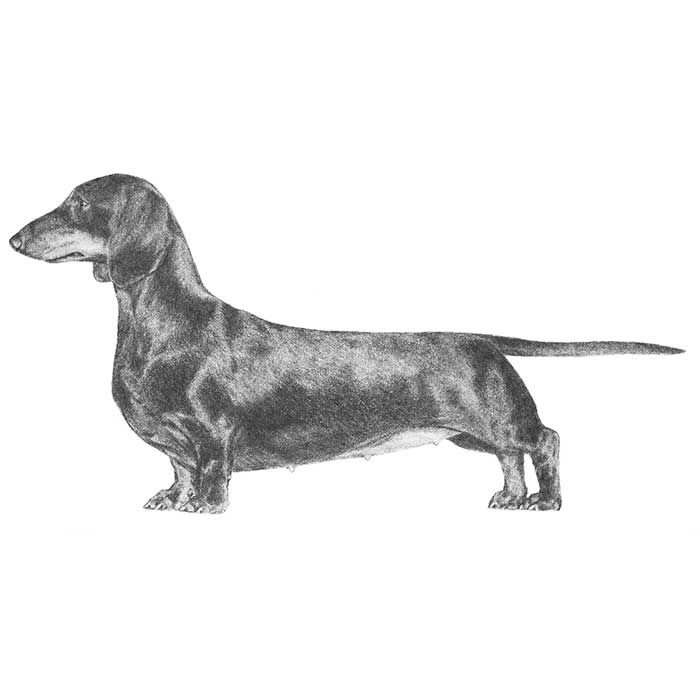
The Dachshund, meaning “badger dog” in German, is a lively breed with a friendly personality and keen sense of smell. Known for their long and low bodies, they are eager hunters that excel in both above- and below-ground work. One of the most popular breeds according to AKC® Registration Statistics, they come in three different coat varieties (Smooth, Wirehaired or Longhaired) and can be miniature or standard size.
- The Dachshund can be found in historical accounts dating back to the 15th, 16th and 17th centuries, when illustrations reflected badgers being hunted with dogs with elongated bodies, short legs and hound-type ears.
- The dogs of medieval Europe were noted to have the tracking ability of hounds and the proportions and temperament of terriers, much needed to pursue their main quarry of badgers.
- Early in the 17th century, the name Dachshund (badger-dog) became the designation of a breed type with smooth and longhaired coat varieties, and in 1890 wirehairs were added as a third variety.
- German breeders learned early on that crossing between longhairs and either smooths or wirehairs did more harm than good, and barred such crossed from registration.
- However, early on in the development of wirehairs, some crosses with smooths was permitted to establish the variety in higher numbers.
- Dogs weighing 30-35 pounds were being used not only on badgers but wild boar, while smaller 16-22 pound dogs proved effective against foxes and hare.
- During the development of the breed, two different sizes were emerging based on the type of game being pursued:
- The Dachshund Club of America has promoted the breed since 1895, and in 1935 Dachshunds were added to AKC field trials to encourage hunting capacity and exemplary conformation and temperament.
- Importations into America date back in the AKC Stud Book in 1885.
The above text and image © 2017 American Kennel Club.
